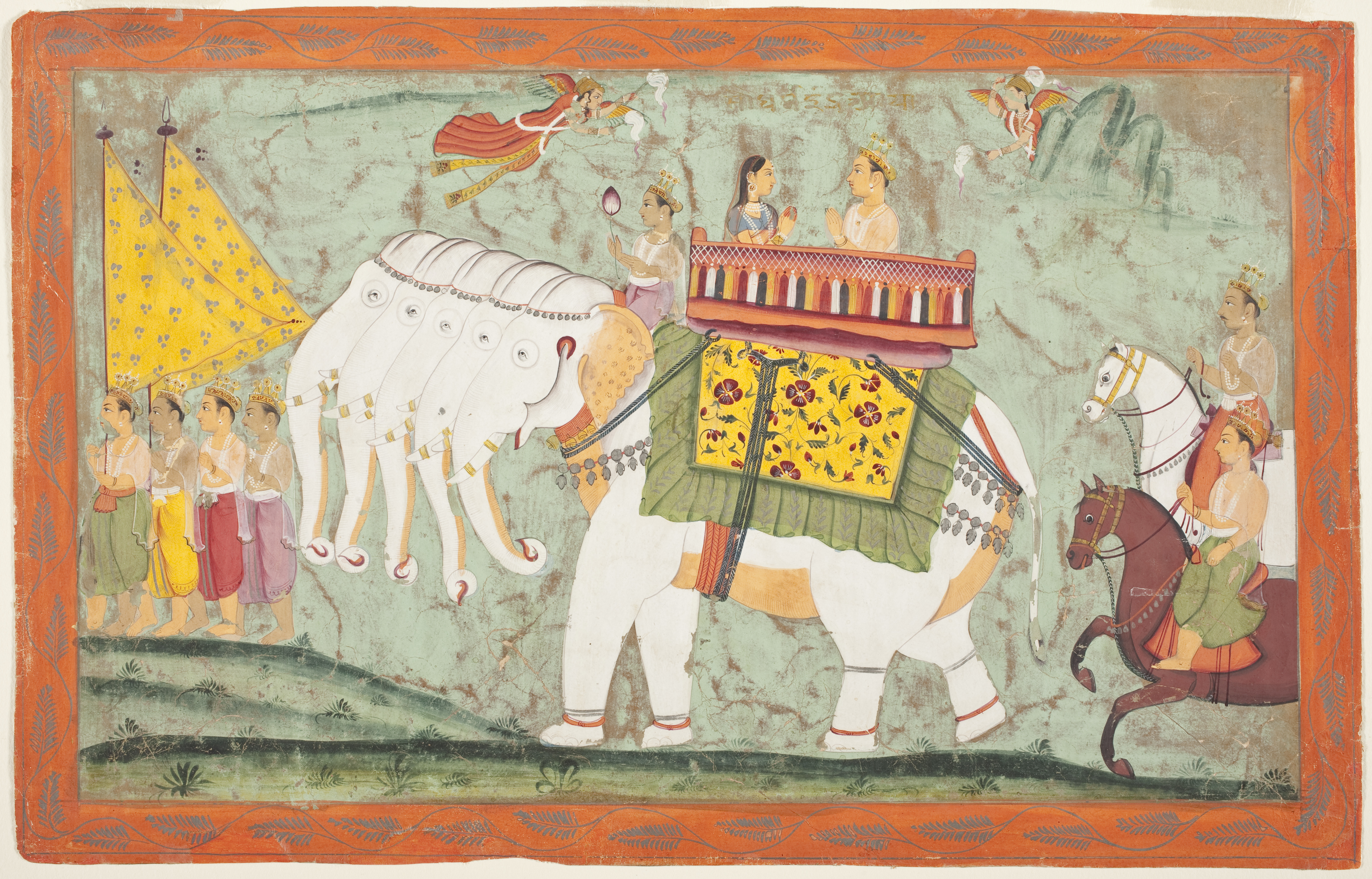While viewing a breeding herd of elephants recently, we noticed a young calf that stood out from the rest of the herd. Not only because of its small size, but also its lighter colouration. Something was very different about this young elephant.

Our first view of the elephant calf. One can see by the size comparison with the mother that it is still only a few weeks old, however the normal grey pigmentation of the skin should be present.
As can be seen in the image, the skin was lighter than usual and had a pinkish tinge. Small patches around the ears, its trunk and parts of its legs were particularly light. Because of this patchiness, we began to wonder whether the elephant had been injured in a fire or whether it possibly had a skin condition. Upon closer inspection though, one will notice that the eyes are a light blue colour.
At first, we thought the elephant may be an albino. This is not common in the elephant world, however several records do exist in both the African and the Asian elephant. There was a previous sighting recorded on Londolozi too. White Elephants as they have become known, are in fact held in very high regard in many cultures – particularly in Asia.

The White Elephant, Airavata. with five heads and ten trunks, this mythical elephant is pictured carrying the Hindu God Indra – the God of lightning, thunder, rains and rivers. Image from: https://en.wikipedia.org/wiki/File:Indradeva.jpg
I decided to consult with scientist and conservationist, Dr Michelle Henley from Elephants Alive on the condition to find out more. It turns out that albinism and leucism are two conditions in animals that are commonly confused. At university I was taught to never cite Wikipedia, however they have summarised it well here:
“Leucism is a condition in which there is partial loss of pigmentation in an animal resulting in white, pale, or patchy coloration of the skin, hair, feathers, scales or cuticle, but not the eyes. It is occasionally spelled leukism. Unlike albinism, it is caused by a reduction in multiple types of pigment, not just melanin.”
So basically, an albino animal lacks all pigmentation while a leucistic animal lacks some pigmentation thus may still express a bit of colour or skin tone. A good place to look to identify whether an animal is albino or leucistic is the hairs and the eyes.

Although difficult to see in this image, the elephant calf has blue, not pink eyes. This, along with the patchiness of pigmentation on the skin, indicates that it is a case of leucism rather than albinism.
At the time of the sighting, I did not know this subtle distinction, however having consulted with Dr Henley and checked the photographs, it is clear that the elephant calf has blue eyes. In cases of albinism, lack of pigment in the iris of the eyes results in the blood vessels under the retina being exposed, giving the eyes a pink or red colour. Based on these facts, one can conclude that this calf has leucism.

Being so young, the calf remained right next to, or underneath its mother for protection. For about a year, elephant calves will fit under the belly of the mother.
A lack of pigmentation, particularly melanin, can cause adverse impacts on the chances of survival of albino individuals. A lack of protection against UV rays in the skin and eyes can cause extreme sensitivity to the sun and potential blindness. In the case of this leucistic calf, life should go on as normal, besides a slightly higher sensitivity to the sun and possibly a higher affinity to blindess or impaired vision – particularly with the bright conditions we so often experience out here.
Nature is always surprising us… It will be fascinating to watch the development of this elephant calf over the coming months as the herds pass through Londolozi.















Fascinating!! Will definitely be very interesting to follow this calfs progress.
Very interesting, Pete. I remember the similar little calf seen previously – do we know what became of her? We viewed a leucistic Anna’s hummingbird here in CA last year & a leucistic kingfisher once in Zimbabwe, both with characteristics just as you describe. Is it more common in birds, I wonder…
Hope you’re able to keep track of this calf,
I hope this little elephant survives and is present frequently enough for you to keep track of him/her.
I certainly didn’t know of this condition. Interesting. However one cannot help feeling sorry for the little chap. Life can be difficult enough surviving in the Bush without additional complications like this. Please keep us informed about this small ellie, will you? It would be so appreciated. Thank you, Pete. Wendy M
Wow ? what a surprise, I knew white elephants lived sometimes in Asia, but had no idea they existed in Africa. I hope he does well and look forward to maybe seeing him in January. Victoria
Thanks for the explanation…Wikipedia or not.
Really informative Pete. I had no idea. I hope I can see this little one. I’ve seen white lions, the hermaphrodite female lion in Botswana, etc. so this is fascinating for me. Isn’t nature wonderful and full of surprises!!
Fascinating Pete!
Wow! This was such an interesting read! Please keep us updated!
You mention: “There was a previous sighting recorded on Londolozi too.” Do you know what became of the previously recorded leucistic calf?
Such an interesting blog, Pete. Keep us posted about this little elephant. Mary Jane
It seems as if more leucistic animals are spotted through out the greater Kruger lately. Is it perhaps that there are more people driving around especially in Kruger and with social media we are made more aware of this phenomenon?